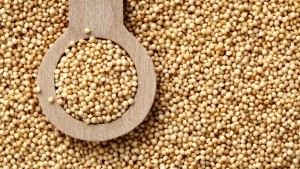South Asia radius
Study: Obese Indian teens getting a fraction of required nutrients

The All India Institute of Medical Sciences (AIIMS) study was released just after World Health Organisation-backed figures reported that more than one-fifth of Indian children and teenagers are now obese, due largely to the “marketing of unhealthy foods and non-alcoholic beverages”.
At the same time, health experts in India have demanded a new system of pictorial health warnings on junk foods to make it harder to ignore the potential harm such products might cause.
The AIIMS study on obese adolescents found that teenagers with weight issues consumed more refined and processed foods than meals containing healthy fruit and vegetables.
It found that a sample of 134 adolescents aged 10-16 lacked the iron, zinc, fibre and vitamin D they needed to stay healthy, causing their bodies to crave even more food to gain the required amount of nutrients.
“While the adolescents lacked in many nutrients, shortage of fibre and vitamin D was very stark,” said Babita Upadhyay, a dietician at AIIMS.
The subjects consumed from 5.6-9.4g of fibre each day, compared to the recommended 25g; while against the required 600 international units of vitamin D, they consumed just 0.15-0.3IU.
According to the Indian Council of Medical Research, Indian adolescents need at least 21mg of iron per day, though the AIIMS’s subjects’ intake was the range of 6.5-16.3mg. The consumption of zinc was 0.7-2.8 mg as against the required 9-12 mg.
“If the overweight adolescents have a deficiency of important nutrients, then it shows that they are not eating nutritious food. It is a scary scenario,” said Vandana Jain, the study’s lead researcher.
The research also found that average intake of fruit and leafy vegetables was only 50g and 150g respectively, and 29% of subjects ate junk food every day. Also, 23% of them skipped breakfast every morning, especially girls.
Over the last five years, India has witnessed an obesity prevalence rate of around 22% among young people aged 5-19, according to a commission formed by the WHO.
Among those under the age of five, the rate is still low, at around 5%, though the Commission on Ending Childhood Obesity believes this is increasing at the fastest pace of all the 100 developing countries it studied.
To address India’s childhood obesity epidemic, a panel of health experts from public institutions and health bodies has called for warnings on junk food packaging that better inform consumers of the health issues the products can cause.
"We have recommended pictorial warnings on junk foods like chips, colas, pizzas and burgers, or health warnings saying that this product contains fat and salt in excess of what is recommended—or even a picture of a liver may on pack indicating that consuming them may led to fatty liver in children and adults," said Vandana Jain, additional professor of paediatrics at All-India Institute of Medical Science.
"What's the big message? It's not the kid's fault," said the WHO commission’s co-chair, Peter Gluckman, whose comments highlighted India’s need to enforce draft dietary guidelines prepared by its food regulator covering the availability of wholesome and nutritious food in schools and restricting the sale of foods which are high in fat, salt or sugar content within 50 metres of a school’s premises.
If not reversed, "the obesity epidemic has the potential to negate many of the health benefits that have contributed to the increased longevity observed in the world," the commission added in its report.
Asia currently accounts for almost half of young children categorised as overweight or obese in the world.
In India, an official report released last week by the Health Ministry’s National Family Health Survey, revealed that the number of obese people had doubled in India over the last decade, with most states witnessing the trend.
More stories from South Asia...
Modi names Sikkim as India’s first fully organic state
India’s prime minister has officially named Sikkim the country’s first fully organic state 13 years after the local legislature set its sights on the title.
In a visit to the mountainous, northeaster hill state, Narendra Modhi heralded Sikkim’s agricultural system, which has seen 75,000 hectares of land converted into certified organic farms under India’s National Programme for Organic Production.
Under the programme’s rules, the state has outlawed the use of synthetic fertilisers and chemical pesticides and every farm is now certified organic.
"Sikkim has already achieved that feat of living in harmony with nature, and is therefore a model of development which also protects nature,” said Modi.
In 2003, Chief Minister Pawan Chamling began a crusade to transform Sikkim’s approach to agriculture by banning the sale of non-organic agriculture products. Still at the helm, Chamling has overseen the process and was present for Modi’s announcement.
Over the last decade, the state has also improved the quality of its soil to produce the majority of India’s 1.24m tonnes of annual organic production. Its most important crops include cardamom, ginger, turmeric, off-season vegetables, mandarin, kiwi, buckwheat, paddy maize and millet.
Already, a burgeoning agri-tourism industry has been established, with organic resorts now selling their produce to visiting travellers.
With its population of just 600,000, Sikkim now joins the likes of California and Wisconsin in America as fully organic states, and is likely to be followed by Kerala, Andhra Pradesh and fellow hill state Mizoram, which have also been eyeing the title.
Commodity snapshot: More acreage and wet weather drive sesame prices down
Sesame seed prices in India, the world’s major producer and exporter, have declined significantly over the last year by over one-third due to increased production and a reduction in demand.
According to Mintec, the commodities analyst, increased acreage, coupled with favourable wet weather conditions, led to an increase in production in 2015, which is estimated to have grown by 20% over the previous year. Planted acreage reached 924,000 ha, up almost 40% on the year.
Prices also fell due to weak export demand in April and July from China and Korea, India’s main importers; during this period, exports fell by 24% to 66,000 tonnes.
Despite this, total exports for 2015 are estimated to have increased due to reduced production supplies from other major producers such as China.












